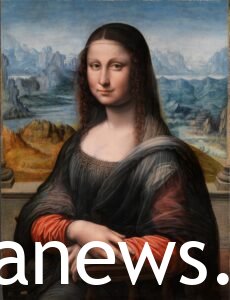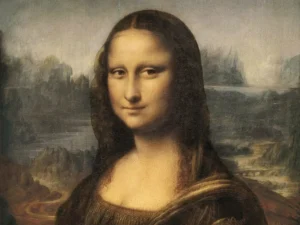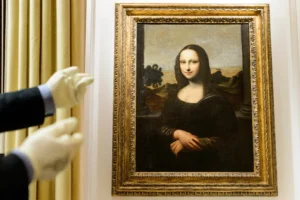Mona Lisa: The Mona Lisa, painted by the legendary artist Leonardo da Vinci, is arguably one of the most famous and enigmatic pieces of art in the world. While many are familiar with her enigmatic smile, there are numerous untold facts that add layers of intrigue to this iconic painting. Let’s delve into the secrets and mysteries that surround the Mona Lisa.

1. Mona Lisa’s Identity Debate
The true identity of the woman depicted in the painting remains a subject of debate among art historians. Some believe she is Lisa del Giocondo, while others speculate on alternative identities.
2. Leonardo’s Unconventional Technique
Leonardo da Vinci employed an unconventional technique called sfumato, blending colors and tones seamlessly to create the illusion of depth and three-dimensionality in the Mona Lisa’s features.
3. Mona Lisa’s Gaze
One of the most captivating aspects of the painting is Mona Lisa’s gaze, which seems to follow viewers as they move around the room. This optical illusion is known as the “sfumato gaze.”
4. Mysterious Background Landscape
The landscape depicted behind the Mona Lisa has sparked curiosity. Some art historians claim it represents an amalgamation of various landscapes, while others propose specific locations in Italy.

5. Leonardo’s Prolonged Work
Leonardo worked on the Mona Lisa for over four years, and it is believed that he continued refining and enhancing the painting until the end of his life.
6. Hidden Numbers and Letters
Examinations using infrared technology have revealed hidden numbers and letters in the eyes of the Mona Lisa, adding to the speculation about hidden meanings within the artwork.
7. Mona Lisa’s Missing Eyebrows and Eyelashes
The painting’s lack of eyebrows and eyelashes has been a subject of fascination. Some suggest that it was a Renaissance fashion trend, while others believe they were intentionally omitted.
8. Small Size, Big Impact
Measuring just 30 inches by 20 inches, the Mona Lisa’s modest size contrasts with its colossal impact on art and culture, making it a symbol of artistic brilliance.
9. Attempted Theft
In 1911, the Mona Lisa was stolen from the Louvre Museum in Paris. The painting was recovered two years later, and the incident significantly increased its fame.
10. Bulletproof Glass Protection
The painting resides behind bulletproof glass at the Louvre to protect it from potential damage. This security measure was implemented after an incident in 1956 when someone threw acid at the painting.
11. Copycat Paintings
Numerous artists have created their versions of the Mona Lisa, attempting to capture the essence of Leonardo’s masterpiece. Some even added their unique twists to the iconic image.

12. Mona Lisa’s Fame During the French Revolution
During the French Revolution, the Mona Lisa was temporarily displayed in Napoleon’s bedroom. Its popularity surged as people flocked to see it, recognizing its cultural significance.
13. Napoleon’s Love for Mona Lisa
Napoleon, an admirer of the Mona Lisa, had the painting displayed in his bedroom, further solidifying its reputation as a treasured masterpiece.
14. Mona Lisa’s Symbolism
Art historians and scholars continue to debate the symbolism behind the Mona Lisa’s smile, with theories ranging from pregnancy to hidden messages.
15. Mona Lisa’s World Record
In 1962, the Mona Lisa was assessed for insurance purposes and was assigned a world-record valuation of $100 million, equivalent to over $800 million today.
16. Hidden Drawing Underneath
High-resolution scans have revealed a hidden drawing beneath the paint of the Mona Lisa, suggesting that Leonardo initially sketched a different pose.
17. Mona Lisa’s Restoration Controversy
The restoration efforts on the Mona Lisa in 1956 sparked controversy as some critics argued that the process altered the original appearance of the painting.
18. Mona Lisa’s Influence on Pop Culture
The painting has been a subject of inspiration for countless artists, writers, and filmmakers, solidifying its status as a cultural phenomenon.
19. Scientific Studies
Scientific analyses, including X-rays and infrared imaging, have unveiled details about Leonardo’s creative process, such as changes made during the painting’s development.
20. Unfinished Background
The background of the Mona Lisa is deliberately left unfinished, contributing to the mystique surrounding the painting and leaving room for interpretation.
The Mona Lisa continues to captivate the world with its mystique, subtle nuances, and historical significance. These untold facts add layers to the enigma, ensuring that Leonardo da Vinci’s masterpiece remains a timeless symbol of artistic brilliance and intrigue.
WRITTEN BY COLLINS
FAQs and answers
1. Who painted the Mona Lisa?
The Mona Lisa was painted by the renowned Italian artist Leonardo da Vinci during the Renaissance period. It is believed to have been created between 1503 and 1506, though some estimates suggest da Vinci continued working on it until 1517.
Reference: Louvre Museum
2. Who is the woman in the Mona Lisa?
The subject of the Mona Lisa is widely believed to be Lisa Gherardini, the wife of Florentine merchant Francesco del Giocondo. The painting is also known as “La Gioconda” in Italian, which is a play on her married name.
Reference: National Geographic
3. Why is the Mona Lisa so famous?
The Mona Lisa is famous for several reasons: Leonardo da Vinci’s masterful use of sfumato (a painting technique), the subject’s enigmatic smile, and its historical significance. Additionally, its theft in 1911 and subsequent recovery added to its global notoriety.
Reference: History.com
4. What is the size of the Mona Lisa painting?
The Mona Lisa is relatively small, measuring 77 cm × 53 cm (30 in × 21 in). Despite its modest size, its impact on art and culture is immense.
Reference: Britannica
5. Why does the Mona Lisa have no eyebrows?
It is believed that the Mona Lisa originally had eyebrows and eyelashes, but they have faded over time due to restoration efforts and natural wear. Some experts also suggest that Leonardo da Vinci may have intentionally painted them faintly.
Reference: Live Science
6. Where is the Mona Lisa currently displayed?
The Mona Lisa is housed in the Louvre Museum in Paris, France. It is displayed in a climate-controlled, bulletproof glass case to protect it from damage and theft.
Reference: Louvre Museum
7. How much is the Mona Lisa worth?
The Mona Lisa is considered priceless, but its estimated insurance value is over $850 million as of 2023. Its cultural and historical significance makes it one of the most valuable paintings in the world.
Reference: CNBC


Comments are closed.